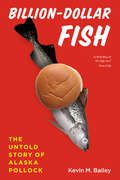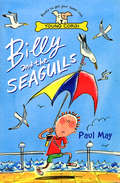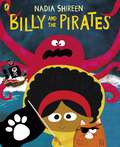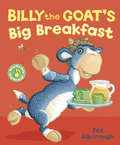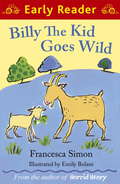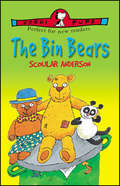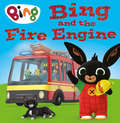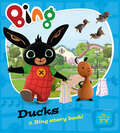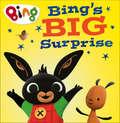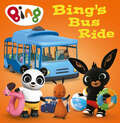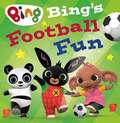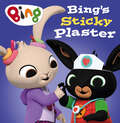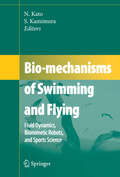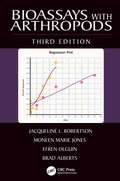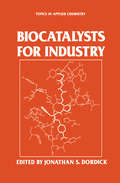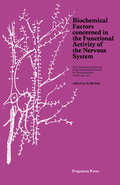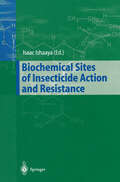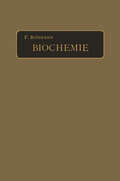- Table View
- List View
Billion-Dollar Fish: The Untold Story of Alaska Pollock
by Kevin M. BaileyAlaska pollock is everywhere. If you’re eating fish but you don’t know what kind it is, it’s almost certainly pollock. Prized for its generic fish taste, pollock masquerades as crab meat in california rolls and seafood salads, and it feeds millions as fish sticks in school cafeterias and Filet-O-Fish sandwiches at McDonald’s. That ubiquity has made pollock the most lucrative fish harvest in America—the fishery in the United States alone has an annual value of over one billion dollars. But even as the money rolls in, pollock is in trouble: in the last few years, the pollock population has declined by more than half, and some scientists are predicting the fishery’s eventual collapse. In Billion-Dollar Fish, Kevin M. Bailey combines his years of firsthand pollock research with a remarkable talent for storytelling to offer the first natural history of Alaska pollock. Crucial to understanding the pollock fishery, he shows, is recognizing what aspects of its natural history make pollock so very desirable to fish, while at the same time making it resilient, yet highly vulnerable to overfishing. Bailey delves into the science, politics, and economics surrounding Alaska pollock in the Bering Sea, detailing the development of the fishery, the various political machinations that have led to its current management, and, perhaps most important, its impending demise. He approaches his subject from multiple angles, bringing in the perspectives of fishermen, politicians, environmentalists, and biologists, and drawing on revealing interviews with players who range from Greenpeace activists to fishing industry lawyers. Seamlessly weaving the biology and ecology of pollock with the history and politics of the fishery, as well as Bailey’s own often raucous tales about life at sea, Billion-Dollar Fish is a book for every person interested in the troubled relationship between fish and humans, from the depths of the sea to the dinner plate.
Billion-Dollar Fish: The Untold Story of Alaska Pollock
by Kevin M. BaileyAlaska pollock is everywhere. If you’re eating fish but you don’t know what kind it is, it’s almost certainly pollock. Prized for its generic fish taste, pollock masquerades as crab meat in california rolls and seafood salads, and it feeds millions as fish sticks in school cafeterias and Filet-O-Fish sandwiches at McDonald’s. That ubiquity has made pollock the most lucrative fish harvest in America—the fishery in the United States alone has an annual value of over one billion dollars. But even as the money rolls in, pollock is in trouble: in the last few years, the pollock population has declined by more than half, and some scientists are predicting the fishery’s eventual collapse. In Billion-Dollar Fish, Kevin M. Bailey combines his years of firsthand pollock research with a remarkable talent for storytelling to offer the first natural history of Alaska pollock. Crucial to understanding the pollock fishery, he shows, is recognizing what aspects of its natural history make pollock so very desirable to fish, while at the same time making it resilient, yet highly vulnerable to overfishing. Bailey delves into the science, politics, and economics surrounding Alaska pollock in the Bering Sea, detailing the development of the fishery, the various political machinations that have led to its current management, and, perhaps most important, its impending demise. He approaches his subject from multiple angles, bringing in the perspectives of fishermen, politicians, environmentalists, and biologists, and drawing on revealing interviews with players who range from Greenpeace activists to fishing industry lawyers. Seamlessly weaving the biology and ecology of pollock with the history and politics of the fishery, as well as Bailey’s own often raucous tales about life at sea, Billion-Dollar Fish is a book for every person interested in the troubled relationship between fish and humans, from the depths of the sea to the dinner plate.
Billion-Dollar Fish: The Untold Story of Alaska Pollock
by Kevin M. BaileyAlaska pollock is everywhere. If you’re eating fish but you don’t know what kind it is, it’s almost certainly pollock. Prized for its generic fish taste, pollock masquerades as crab meat in california rolls and seafood salads, and it feeds millions as fish sticks in school cafeterias and Filet-O-Fish sandwiches at McDonald’s. That ubiquity has made pollock the most lucrative fish harvest in America—the fishery in the United States alone has an annual value of over one billion dollars. But even as the money rolls in, pollock is in trouble: in the last few years, the pollock population has declined by more than half, and some scientists are predicting the fishery’s eventual collapse. In Billion-Dollar Fish, Kevin M. Bailey combines his years of firsthand pollock research with a remarkable talent for storytelling to offer the first natural history of Alaska pollock. Crucial to understanding the pollock fishery, he shows, is recognizing what aspects of its natural history make pollock so very desirable to fish, while at the same time making it resilient, yet highly vulnerable to overfishing. Bailey delves into the science, politics, and economics surrounding Alaska pollock in the Bering Sea, detailing the development of the fishery, the various political machinations that have led to its current management, and, perhaps most important, its impending demise. He approaches his subject from multiple angles, bringing in the perspectives of fishermen, politicians, environmentalists, and biologists, and drawing on revealing interviews with players who range from Greenpeace activists to fishing industry lawyers. Seamlessly weaving the biology and ecology of pollock with the history and politics of the fishery, as well as Bailey’s own often raucous tales about life at sea, Billion-Dollar Fish is a book for every person interested in the troubled relationship between fish and humans, from the depths of the sea to the dinner plate.
Billion-Dollar Fish: The Untold Story of Alaska Pollock
by Kevin M. BaileyAlaska pollock is everywhere. If you’re eating fish but you don’t know what kind it is, it’s almost certainly pollock. Prized for its generic fish taste, pollock masquerades as crab meat in california rolls and seafood salads, and it feeds millions as fish sticks in school cafeterias and Filet-O-Fish sandwiches at McDonald’s. That ubiquity has made pollock the most lucrative fish harvest in America—the fishery in the United States alone has an annual value of over one billion dollars. But even as the money rolls in, pollock is in trouble: in the last few years, the pollock population has declined by more than half, and some scientists are predicting the fishery’s eventual collapse. In Billion-Dollar Fish, Kevin M. Bailey combines his years of firsthand pollock research with a remarkable talent for storytelling to offer the first natural history of Alaska pollock. Crucial to understanding the pollock fishery, he shows, is recognizing what aspects of its natural history make pollock so very desirable to fish, while at the same time making it resilient, yet highly vulnerable to overfishing. Bailey delves into the science, politics, and economics surrounding Alaska pollock in the Bering Sea, detailing the development of the fishery, the various political machinations that have led to its current management, and, perhaps most important, its impending demise. He approaches his subject from multiple angles, bringing in the perspectives of fishermen, politicians, environmentalists, and biologists, and drawing on revealing interviews with players who range from Greenpeace activists to fishing industry lawyers. Seamlessly weaving the biology and ecology of pollock with the history and politics of the fishery, as well as Bailey’s own often raucous tales about life at sea, Billion-Dollar Fish is a book for every person interested in the troubled relationship between fish and humans, from the depths of the sea to the dinner plate.
Bill's Clinical Pharmacology and Therapeutics for Veterinary Technicians - E-Book: Bill's Clinical Pharmacology and Therapeutics for Veterinary Technicians - E-Book
by Melinda AndersonBuild the skills you need to use drugs safely and avoid potential problems! Trusted by vet techs for 30 years, Bill's Clinical Pharmacology and Therapeutics for Veterinary Technicians helps you understand the principles and practice of pharmacology in treating different animal species. The text explains how drugs work, how they are administered, and how to calculate drug dosages. Covering drugs by body system, the book also explains possible abuses, mistakes, and how things can go wrong when therapeutic protocols are not properly implemented. From veterinary pharmacist and educator Melinda "Mindy" Anderson, this fifth edition helps you provide better care for your patients and better education for their owners. Content on basic pharmacology includes topics such as safety, terminology, pharmacy procedures, drug handling (including the latest OSHA requirements), dosage calculations, and pharmacokinetics. Chapter outlines, learning objectives, and key terms are provided at the beginning of each chapter, introducing you to the complex principles of pharmacology and guiding your study. Clear explanations of drugs help you understand the "how" and "why" behind drugs, their actions, their mechanisms, and adverse effects. Myths and Misconceptions, Ask Dr. Bill, and You Need to Know boxes spotlight key issues, concepts, and skills. Clinical applications link pharmacologic concepts to real-life situations. Review questions and critical thinking questions are included at the end of every chapter to help readers test their comprehension. Test questions and online quizzes enable self-assessment and help you prepare for classroom and certification exams. NEW Veterinary Feed Directives section reflects the newest FDA guidelines on medicated feed for animals. NEW! Updated drug information includes all drug categories as well as new information on several drugs. NEW! Additional full-color images make it easier to understand pharmacology concepts. NEW! Updated test questions and drug calculation exercises on the Evolve website make study and review easier and reinforce your understanding of difficult subject matter.
Billy And The Seagulls
by Mr Paul MayEddie's little brother Billy is terrified of everything! Snakes, the dark, toilets, orange peel, moustaches and even soggy toast. When they move to the seaside, Billy find a new thing to be scared of - seagulls! They swoop down in the playground and pick at leftover crisp packets - and Billy thinks they are the scariest thing he has ever seen. Can Eddie and his stepfather try to work out ways to help Billy get over his fears?
Billy and the Pirates
by Nadia ShireenJoin Billy and Fatcat on their quest to escape Captain Howl in their third thrilling adventure, filled with singing mermaids and sticky toffee eating sharks.Ahoy there! It's time to sail the ocean blue with Billy and her trusty feline friend, as they embark on a noble seafaring adventure. Billy and Fatcat find a mysterious message in a bottle at sea. When suddenly something terrible happens: they bump into a pesky pirate and his smelly crew. Oh no!Fortunately for our courageous twosome, they're no strangers to peril: they always have a trick (or treat) up their sleeves.Nadia Shireen is back with her third instalment from our favourite heroine and hangry cat.Explore the other titles from Billy and Fatcat:Billy and the BeastBilly and the Dragon
Billy the Goat’s Big Breakfast (Nat the Cat)
by Jez AlboroughNat the Cat makes some lovely homemade bread for her friends to share. But Billy the Goat is too greedy to wait for the bread to bake -- and he gulps down a sneaky mouthful of the delicious-looking dough... Soon his tummy has swollen up like a fresh loaf of bread. What will Nat the Cat say when she finds out?
Billy the Kid Goes Wild (Early Reader)
by Francesca SimonEarly Readers are stepping stones from picture books to reading books. A blue Early Reader is perfect for sharing and reading together. A red Early Reader is the next step on your reading journey.Billy the kid has so much to do before Gabby Goose's birthday party, there's no way he's ready for his afternoon nap. It's up to the rest of the animals in Potter's Barn to tire him out and ensure Gabby's party goes off with a bang!
The Bin Bears
by Scoular AndersonWhen the bin men find Dotty the Dinosaur, they put her up on the front of their truck. There she meets three other Bin Bears, called Posh, Threadbare and Dusty. The Bin Bears have lots of fun together. But Dotty doesn't really want to be a bin truck mascot. She'd rather be safely tucked up at home...An entertaining story from a very popular author/illustrator.
Bing and the Fire Engine (Bing)
by HarperCollinsChildren’sBooksRound the corner, not far away, Bing is going to see a fire engine today!
Bing Ducks (Bing)
by HarperCollinsChildren’sBooksA gorgeous new story book to accompany the new CBeebies preschool series.
Bing’s Bus Ride (Bing)
by HarperCollinsChildren’sBooksRound the corner, not far away, Bing is going to the seaside today!
Bing’s Football Fun (Bing)
by HarperCollins Children’s BooksA fantastic new picture book about Bing learning how to play football!
Bing’s Sticky Plaster (Bing)
by HarperCollins Children’s BooksA vibrant new picture book about how all kids want to have plasters, whether they need one or not, based on the award-winning CBeebies show Bing.
Binny for Short: Book 1 (Binny)
by Hilary MckayFrom the winner of the Costa Children's Book Award 2018.Binny's life has been difficult since her father died and her dreadful old Aunt Violet disposed of her beloved dog, Max. Her world changed then, to a city flat with not enough space for her Mum, her big sister Clem and her small brother James. Definitely no room for a pet.Then one day Aunt Violet dies, leaving a small cottage in Cornwall to Binny and her family. Binny finds herself in a new world once more, full of sunshine and freedom and Gareth, the enemy-next-door and the ideal companion for dangerous dares. But Max is still lost in the past, and it seems impossible that she'll ever find him again...
Bio-mechanisms of Swimming and Flying: Fluid Dynamics, Biomimetic Robots, and Sports Science
by Naomi Kato Shinji KamimuraThis book covers a wide range of animals from flagellated microorganisms to marine mammals. It follows "Bio-mechanisms of Animals in Swimming and Flying" published in 2004 including 11 chapters. This time, the book includes 31 chapters on the latest researches into natural autonomous systems and locomotion in both flying and swimming organisms. The area of sports science such as analysis and simulation of human swimming is newly added. The computational frameworks for the modeling, simulation and optimization of animals in swimming and flying demonstrate an important role in the progress of interdisciplinary work in the fields of biology and engineering.
Bioassays with Arthropods
by Jacqueline L. Robertson Moneen Marie Jones Efren Olguin Brad AlbertsImagine a statistics book for bioassays written by a statistician. Next, imagine a statistics book for bioassays written for a layman. Bioassays with Arthropods, Third Edition offers the best of both worlds by translating the terse, precise language of the statistician into language used by the laboratory scientist. The book explains the statistical basis and analysis for each kind of quantal response bioassay in just the right amount of detail. The first two editions were a great reference for designing, conducting, and interpreting bioassays: this completely revised and updated third edition will also train the laboratory scientist to be an expert in estimation of dose response curves. New in the Third Edition: Introduces four new Windows and Apple-based computer programs (PoloJR, OptiDose, PoloMixture and PoloMulti) for the analyses of binary and multiple response analyses, respectively Replaces out-of-date GLIM examples with R program samples Includes a new chapter, Population Toxicology, and takes a systems approach to bioassays Expands the coverage of invasive species and quarantine statistics Building on the foundation set by the much-cited first two editions, the authors clearly delineate applications and ideas that are exceptionally challenging for those not already familiar with their use. They lead you through the methods with such ease and organization, that you suddenly find yourself readily able to apply concepts that you never thought you would understand. To order the PoloSuite computer software described in Bioassays with Arthropods, Third Edition, use the order form found at www.leora-software.com or contact the LeOra Software Company at leorasoftware@gmail.com.
Bioassays with Arthropods
by Jacqueline L. Robertson Moneen Marie Jones Efren Olguin Brad AlbertsImagine a statistics book for bioassays written by a statistician. Next, imagine a statistics book for bioassays written for a layman. Bioassays with Arthropods, Third Edition offers the best of both worlds by translating the terse, precise language of the statistician into language used by the laboratory scientist. The book explains the statistical basis and analysis for each kind of quantal response bioassay in just the right amount of detail. The first two editions were a great reference for designing, conducting, and interpreting bioassays: this completely revised and updated third edition will also train the laboratory scientist to be an expert in estimation of dose response curves. New in the Third Edition: Introduces four new Windows and Apple-based computer programs (PoloJR, OptiDose, PoloMixture and PoloMulti) for the analyses of binary and multiple response analyses, respectively Replaces out-of-date GLIM examples with R program samples Includes a new chapter, Population Toxicology, and takes a systems approach to bioassays Expands the coverage of invasive species and quarantine statistics Building on the foundation set by the much-cited first two editions, the authors clearly delineate applications and ideas that are exceptionally challenging for those not already familiar with their use. They lead you through the methods with such ease and organization, that you suddenly find yourself readily able to apply concepts that you never thought you would understand. To order the PoloSuite computer software described in Bioassays with Arthropods, Third Edition, use the order form found at www.leora-software.com or contact the LeOra Software Company at leorasoftware@gmail.com.
Biocatalysts for Industry (Topics in Applied Chemistry)
by Jonathan S. DordickThe application of enzymes or whole cells (fermentatively active or resting; microbial, plant, or animal) to carry out selective transformations of commercial importance is the central theme of industrial biocatalysis. Traditionally, biocatalysis has been in the domain of the life scientist or biochemical engineer. However, recent advances in this field have enabled biocatalytic processes to compete head on with, and in some cases out perform, conventional chemical processing. Chemo-biocatalytic systems are being developed thereby combining the most attractive features of bio catalysts, namely high specificity, with those of chemical catalysts, such as high reactivities and wide substrate specificities. Hence, synthetic chemists and chemical engineers are now beginning to use biocatalysts as highly selective reagents in chemical synthesis and processing. This book is about biocatalysts and their past, present, and potential applications in the food, pharmaceutical, and chemical industries. The con cept of the book did not emanate from a meeting. Rather, it is a compila tion of selected examples where biocatalysis either has already made a significant impact in the aforementioned industries, or has the potential to make a substantial contribution. I have been fortunate to have assembled contributions from world-class researchers in the field of biocatalysis. Their timely contributions are sincerely appreciated.
Biochemical Factors Concerned in the Functional Activity of the Nervous System: First International Meeting of the International Society for Neurochemistry, Strasbourg, 1967
by D. RichterBiochemical Factors Concerned in the Functional Activity of the Nervous System presents the biological aspects concerned in the functional activity of the nervous system. This book covers several interesting topics concerning the central nervous system, including phospholipids, RNA synthesis, nerve impulse flow, and nerve growth factor. Comprised of 213 chapters, this book begins with an overview of the electron micrographs of calcium–ATP–phospholipid complexes. This text then examines the biochemical and histochemical studies on sectioned rat spinal cords, which demonstrated two types of monoamine-reducing drugs. Other chapters consider the diversity of antagonistic relations between the thiamine derivatives and vitamin B6, which is manifested by changes in the glutamate–GABA, histidine–histamine, tryptophan–serotonin, and tyrosine–noradrenaline systems. This book discusses as well the influence of a conditioned avoidance training experience on the incorporation of radioactive uridine into the RNA of mouse brain. The final chapter deals with the amino acid-incorporating activity of cerebral polyribosomes. This book is a valuable resource for biochemists, neurologists, pharmacologists, and biophysicists.
Biochemical, Pharmacological, and Clinical Aspects of Nitric Oxide
by N. Allon S. Shapira B. A. WeissmanA decade ago, for most scientists investigating various issues in life sciences the word "NO" was used in a negative context. It is astounding to observe how recently researchers are addressing the issue of NO, namely, nitric oxide, in over fifty publications weekly. Science journal, while naming nitric oxide: "Molecule of the Year" (December 1992), said it all: "NO news is good news. " For a long period of time NO was considered as a pollutant and every ecology minded person tried to eliminate it. It was the discovery of NO involvement in the process of host killing by macrophages and several years later the finding that EDRF is none else but NO, that promoted this field. Nitric oxide's major role in the control of blood pressure is merely one factor of an extensive list of effects and functions attributed to it. NO is implicated in long-term potentiation (LPT), a principal process involved in memory consolidation and it is considered as the main biochemical substance responsible for penile erection. It should be noted that additional roles for NO are discovered continuously as many laboratories join the quest for the mystery of this small molecule. The observation that NO is involved in various biological processes is not unique, as other second messengers (i. e. , cyclic AMP), participate in a diverse set of functions.
Biochemical Sites of Insecticide Action and Resistance
by Isaac IshaayaIn recent years many of the conventional methods of insect control by broad spectrum synthetic chemicals have come under scrutiny because of their unde sirable effects on human health and the environment. In addition, some classes of pesticide chemistry, which generated resistance problems and severely affected the environment, are no longer used. It is against this background that the authors of this book present up-to-date findings-relating to biochemical sites that can serve as targets for developing insecticides with selective prop erties, and as the basis for the elucidation of resistance mechanisms and countermeasures. The book consists of eight chapters relating to biochemical targets for insec ticide action and seven chapters relating to biochemical modes of resistance and countermeasures. The authors of the chapters are world leaders in pesti cide chemistry, biochemical modes of action and mechanisms of resistance. Biochemical sites such as chitin formation, juvenile hormone and ecdysone receptors, acetylcholine and GABA receptors, ion channels, and neuropeptides are potential targets for insecticide action. The progress made in recent years in molecular biology (presented in depth in this volume) has led to the iden tification of genes that confer mechanisms of resistance, such as increased detoxification, decreased penetration and insensitive target sites. A combina tion of factors can lead to potentiation of the resistance level. Classifications of these mechanisms are termed gene amplification, changes in structural genes, and modification of gene expression.
